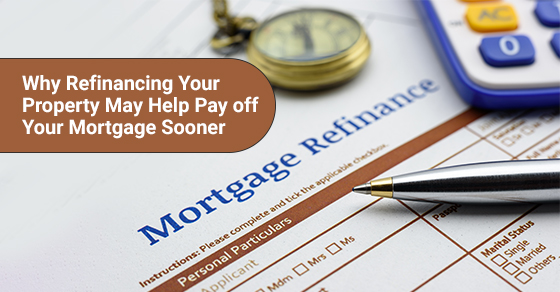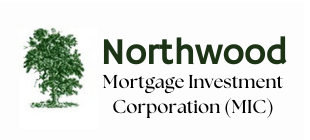For most households in America, debt can be a major problem. This is especially true for people who have credit card debt on top of their mortgages, student loans, and car loans. The average household in the U.S. has more than fifteen thousand dollars in credit card debt. As of 2015, an average interest rate of more than 13% was paid on this debt. There are many credit cards that charge even higher interest rates for these high unpaid balances.
Refinancing your mortgage is one way to help with managing debts, both of the secured and unsecured variety. When you refinance your property, you may be able to pay off your mortgage sooner. You may also be able to pay off outstanding credit card debt and make payments on any overdue bills.
Refinancing to Lower Mortgage Rates
Over the past few years, mortgage rates have been at historic lows. In November of 2012, the average 30-year mortgage interest rate hit its lowest-ever recorded number of 3.31%. As of March 2016, the mortgage rate had become slightly higher but remained steady at 3.71%.
Homeowners find that they can lower their monthly mortgage payments by refinancing with a lower interest rate. Doing so increases the amount of cash you have on hand from month to month. Because of this, you’ll be able to start paying off credit card debt and overdue bills.
Refinancing to Shorter-Term Mortgages
If you don’t have a substantial amount of credit card debt, and you find that you have a large amount of surplus funds on hand each month, you may want to refinance to a shorter mortgage. This means that you’ll be paying more each month, but you’ll also be paying for a shorter amount of time. Not only will your loan be paid off more quickly than under your previous mortgage, you’ll pay less interest over the total duration of the term and thus save money overall.
It’s common for people to refinance into a 10-year or 15-year mortgage from a 20-year or 30-year one. For example, you might have invested in a 30-year mortgage paying back $200,000, with an interest rate of 4.5 percent. After five years, you might refinance that loan into a 15-year mortgage with an interest rate of 4 percent. When you do so, you’ll have your mortgage fully paid ten years earlier. You’ll also save over $60,000, minus the closing costs of the refinance.
30-year mortgages tend to have the highest interest rates. Meanwhile, shorter-term mortgages such as 10-year and 15-year mortgages tend to have interest rates that are between .25% and .75% lower than the average 30-year rate.
With that said, you need to consider the closing costs. If you intend to pay the loan off more quickly, you’ll need to be able to make higher monthly payments. This means that you shouldn’t refinance unless you’re fully confident that you have the cash on hand to do so. If you lack the money to make your mortgage payment during just one month, your credit rating will be affected and other consequences may be involved.
Prior to refinancing, ensure that you have at least three month’s expenses saved and keep this rainy-day fund in a separate account that you don’t touch except in case of financial emergency. The total amount should include not just three months’ worth of mortgage payments, but three months’ worth of food, transportation, utility bills, etc. Keep in mind that refinancing will only save you significant amounts of money if you get an interest rate that’s lower than your previous interest rate.
Paying Extra Each Month
If you don’t want to deal with the added costs of a refinance, but you do want to pay off your mortgage early, you can decide to pay a little extra money each month. If your mortgage is a closed mortgage, there will be penalties for prepayments, so be sure to consult your mortgage advisor to see if this is a good option for you.
Make sure that you get in contact with your mortgage servicer before you make any additional payments. Find out what steps you need to take to ensure that the payments are correctly added to your loan balance. You don’t want your money to be improperly handled. You should inform the servicer that you intend to make more aggressive payments, and find out what your best options are to that end.
Depending on the servicer, you might be required to make a note on the check regarding how the extra money should be applied. After you make a payment, you should always check your next mortgage statement to make sure that the payment was properly applied to the outstanding loan balance.
Making an Extra Payment Each Year
This is a similar principle to paying more money each month. However, rather than adding a little bit of money to your mortgage payment every month, you’ll save enough money to make an extra mortgage payment at the end of the year.
If you use this method during the first month after you secure a 30-year mortgage of $200,000 at 4.5 percent, your total savings will be more than $27,000. The mortgage will also be paid in full 4 years and 3 months earlier than it would have been otherwise. That’s years of interest payments that you won’t have to pay, which is where the savings come from.
Putting “Found Money” Toward the Mortgage
Sometimes, people come into unexpected windfalls. You might receive a bonus at work, or you may receive an unusually large tax refund. Instead of using this money to buy something extravagant, you can funnel it into your mortgage payment. This will help you pay off your mortgage faster and avoid paying exorbitant interest rates over the long run.
The only downside to this method is that you won’t be able to predict the payoff date for the mortgage very easily, because of the intermittent nature of unexpected windfalls. If you want to be able to predict the payoff date reliably, you should make regularly scheduled payments in a regular increment.
For more information, call Northwood Mortgage™ at 1-888-492-3690 or contact us here.






































